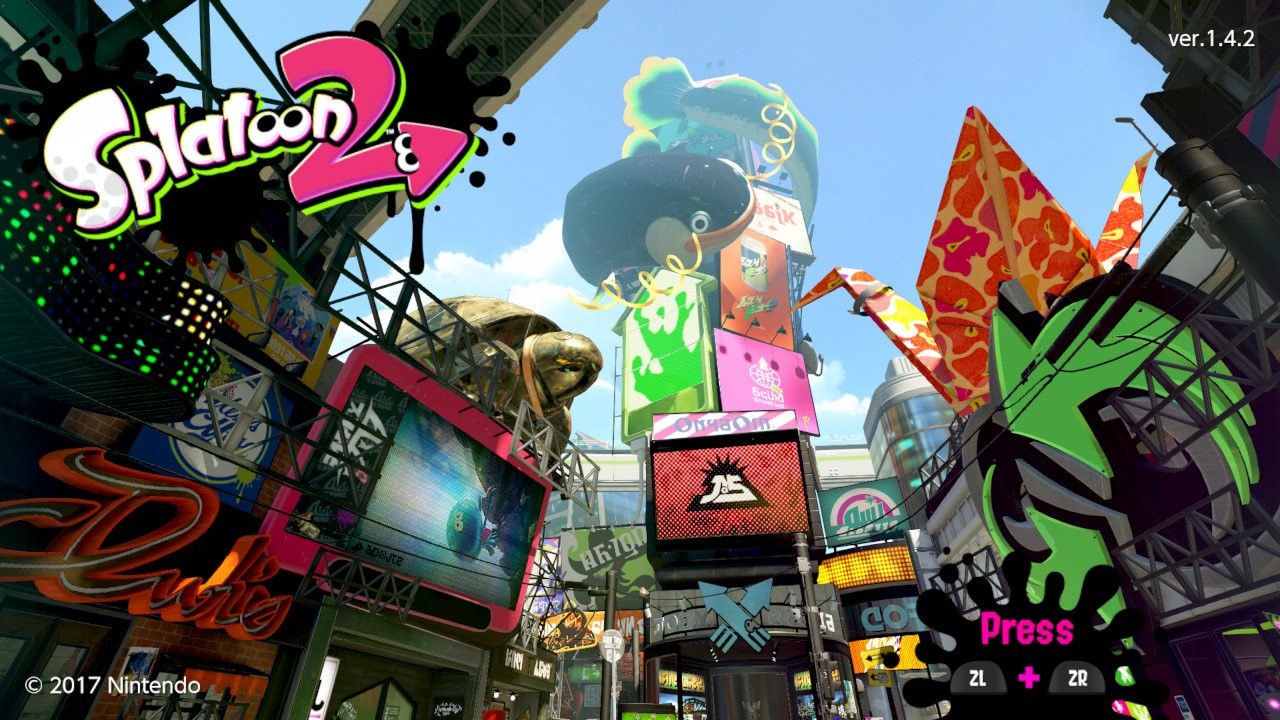Splatoon 2
A Game for Squidbags
Although not heavily publicized, it is common knowledge that Nintendo is run by an advanced species of aliens. These peaceful aliens happen to be fascinated by the concept of human pleasure. For over a century, they have studied how to best invoke joy in humanity, starting out with hanafuda cards, briefly dabbling in love hotels, then testing different ventures, before finally settling on video games. Because of their heightened intelligence, they have produced numerous remarkable innovations complemented by stellar games. Alas, despite their years of research and genius, these Nintendaliens often fail to remember basic human concepts.
Nintendo’s gaming history is riddled with their mistakes. The N64’s controller was innovative for emphasizing analogue control and for offering a rumble feature, but the Nintendaliens failed to remember that humans have two hands, not three, rendering the three-prong controller awkward at times. The Virtual Boy was ahead of its time for adventuring into 3-D territory, but unfortunately, Nintendo overlooked the fact that the red/black graphics – while pleasing to their compound eyes – induced bleeding in human eyes. Nintendo’s struggles with online features serve as another example: because WiFi causes instantaneous seizures for Nintendaliens, their ability to roll out anything remotely resembling a competent online plan has been hampered by continuous job site casualties.
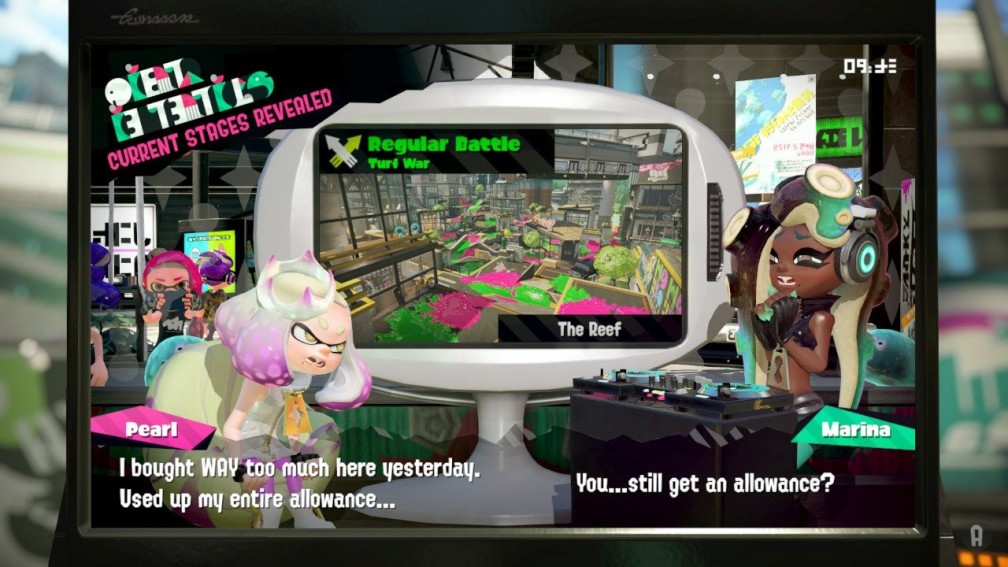
Splatoon 2 stands as a quintessential example of both Nintendo’s genius and absurdly alien absent-mindedness. Like any of Nintendo’s long-running franchises, Splatoon 2 presents genre-defining entertainment wrapped in character and charm. It seduces gamers of all types and serves as a strong reason to purchase a Switch. It also features some of the most maddeningly-stupid mechanics in modern video games, some so detrimental, you cannot fathom a clear-headed human could create them.
What is it?
Splatoon 2 is a third-person shooter the same way a platypus is a mammal. Both theoretically fit their respective classifications, but no one looks at Splatoon and says, “Hey, it’s like Gears of War,” just like no one looks at those venomous, duck-billed, egg-laying, milk-sweating creatures and thinks, “That is just like my cat.” Or maybe you do. I don’t understand cats.
In Splatoon, you are an “inkling,” a species of hipster kids who can change into squids at will. You battle against other inklings in teams of four, using weapons which spew forth brightly-colored ink to paint the battlefield and drown your opponents. Weapons range from your standard guns, snipers, and shotguns to your wackier household appliances like buckets, paint rollers, and ink brushes. Each weapon has its own sub-weapon (typically variations of grenades) and a special, which can be air strikes, massive lasers, temporary armor, or other strange devices.
In a single battle, you will transition quickly between your kid and squid forms. In kid form, you can unleash your weapons to ink the field and wipe out opponents. However, your squid form can swim in your ink much faster than your biped counterpart and jump higher. Your squid can also hide in said ink where it will replenish your ink reserves.
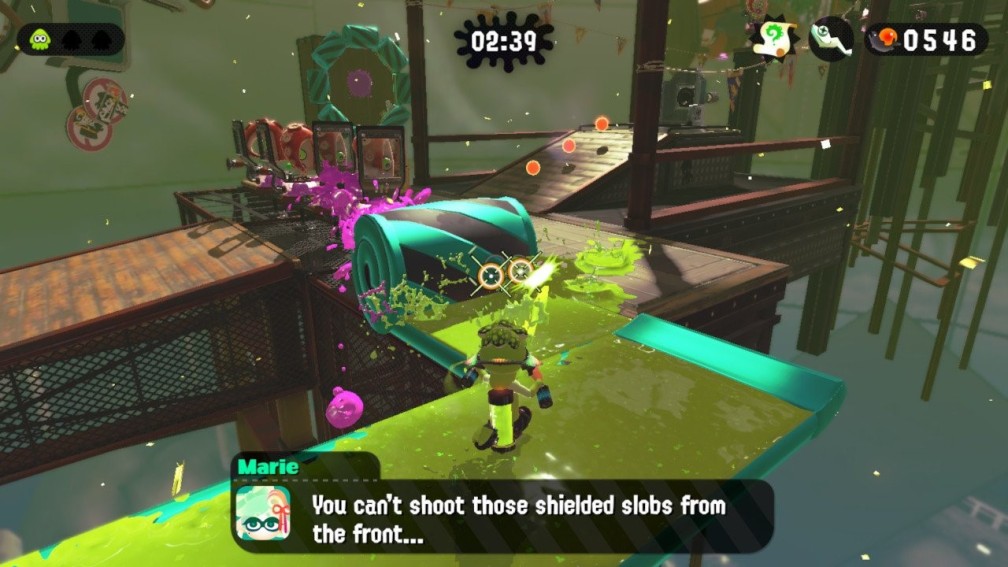
Online multiplayer is at the heart of Splatoon 2 and offers five modes. Turf War (the game’s “casual mode,” offered 24/7) challenges two teams of four to mark a greater percentage of the stage with their colored inks in three minutes. Once you win games and reach rank five, you will have access to Salmon Run (available in 12-hour blocks every other day or so) which is a horde mode of sorts in which you and three others fight off various mutated salmanoid creatures and steal their eggs for profit. After hitting rank 10, you are exposed to the true competitive modes: Rainmaker, Tower Control, and Splat Zones. These modes rotate every two hours and are Splatoon’s take on Capture the Flag, King of the Hill, and Domination, respectively.
Outside of online multiplayer, a single-player campaign can occupy you for a handful of hours as you battle the Octarian Empire (composed of octopi creatures because the Splatoon world is rife with racism) across 32 stages. Most levels will find you running and gunning while navigating minor platforming areas. Regarding local single-console multiplayer, there isn’t one. Nintendo has scrapped the largely pointless local multilayer mode found in the original Splatoon, and in its place, you can host local matches with your friends who also have $360 to buy a Switch and Splatoon 2.
What’s good?
- Nintendo has created a genuinely fun and unique experience. Morphing from squid to kid is seamless and makes your firefights fluid and dynamic. Weapons, gear, and game modes can change gameplay drastically, encouraging you to experiment with new load outs. For those worried about Splatoon being a kiddie version of typical shooters, Splatoon’s cutesy design belies its depth; considerable strategy and skill are needed to win reliably. The gameplay, itself, is absurdly enjoyable no matter the game mode, from Splat Zones to Salmon Run to Turf War to not Rainmaker.
- Splatoon’s environment and tone are infectiously gleeful and engaging. Inkopolis serves as the world’s hub where inklings gather to show off their outfits and personalized messages (a remnant of the Wii U’s Miiverse). You buy gear and weapons from quirky shops and their equally strange owners, each attempting their best Portlander impression. Additionally, every month, Nintendo launches a Splatfest with the entire Inkopolis plaza overhauled with decorations and arranged as a concert venue. It’s all so immersive that you, too, will be questioning if you’re a squid or a kid.
- For fans of Splatoon 1, there are enough changes to justify a purchase. For you, Splatoon 2 will feel more like a massive expansion pack than a sequel, which may be all you need if you enjoyed the original. Salmon Run is just as strong as the original four multilayer modes, and Tower Control has been improved through the introduction of checkpoints. These checkpoints stop rounds from being unfairly dominated by one team with a strong start, a problem still present in Rainmaker.
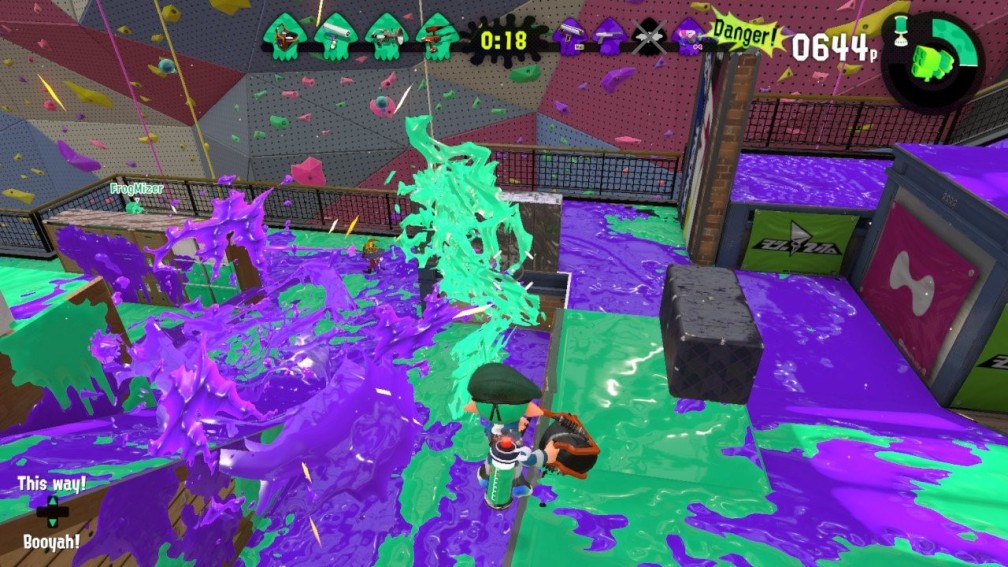
What’s bad?
- The single player campaign feels less inspired and dynamic than the original’s offering. Many assets are reused (from music to enemies to gimmicks); levels seem to drag on longer than necessary; and locating the levels in the campaign’s hub is a chore. The overall experience is still enjoyable but can be skipped over entirely.
- Playing with friends is a nightmare. Want to play Turf War? You’d better be okay with playing on opposite teams often because pairings are always random. Want to play Ranked Mode? Screw you; you can go host private battles and hope seven friends magically appear. How about League? If you have one or three friends, you’re good to go (provided that your friends are rank 10 and a B- in one Ranked Mode), but if your team only has three people altogether, well, you can play Turf War or Salmon Run instead (if it’s available). That’s what you really wanted to do, right?
- A bunch of other little issues add up to a major headache. Why can’t I change my weapon load-out while in a Regular or Ranked lobby? Why is the voice chat so crappy? Why isn’t Salmon Run offered 24/7? Why are only two stages available to play at a time? Why does the matchmaking process seem so poor? Why can’t I choose to only play against people in my region? Why do I have to play seven games every rotation in League Mode just to see my player score? Why can’t I play against bots in private battles (this one is a bit of a stretch)? If I’m kicked out of a game, why can’t I rejoin that game if there is still time left in the round? Why is that guy squid-bagging me so much? I hate him. Why are certain Salmon Run bosses just utter garbage, like the Flyfish? Why isn’t the intro sequence skippable? Why aren’t there any mini games in the lobby anymore? No matter the play session, these issues will pop up and cause at least a minor annoyance (if not much more).
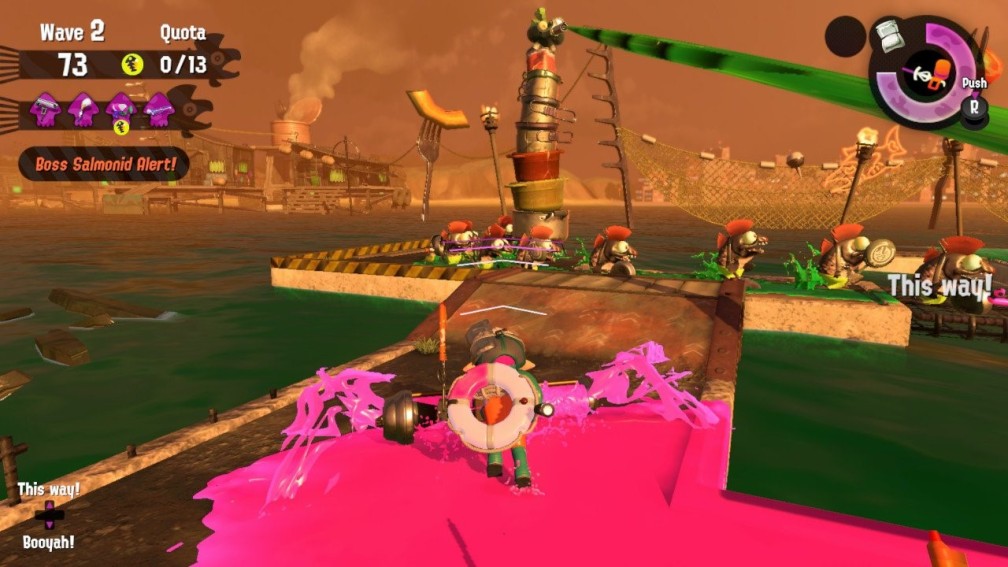
What’s the verdict?
Nintendo and its aliens know what fun is and how to present it. However, they don’t always seem to realize what is logical, and Splatoon 2 shows Nintendo’s strange understanding of the world. The unique core experience and the genuinely joyous presentation deserve heaps of praise and adoration, but it’s difficult to enjoy the ride when numerous small issues make for a rocky road. These rough spots are all the more frustrating because they seem so easily fixable, and if they were fixed, Splatoon 2 would be a near perfect game. For most Switch gamers, Splatoon is still a must-have. Just keep your fingers crossed and hope Nintendo miraculously realizes their mistakes and addresses them in the game’s routine updates.
Arbitrary Statistics:
- Score: 8
- Time Played: 115 hours
- Number of Players: 1
- Games Like It on Switch: Doom, Arms

